USB microphones are becoming a competitive and very sought-after design in the current age of content creation. Having gone from a niche made by gaming and tech companies to a plethora of professional designs by established audio professionals, USB mics serve a range of purposes and have all kinds of features.
So, where should you start? We’re breaking down the best budget USB microphones for content creators, podcasters, gamers, and home-recording musicians.
In a hurry?
Here’s a quick rundown of our top five picks for USB microphones under £200:
| Rode NT-USB Mini | Clear USB condenser microphone with 360-degree rotation on stand and built-in DSP effects. | Check the current price |
| Sennheiser Profile | User-friendly back-to-basics USB microphone with comprehensive on-board monitoring options. | Check the current price |
| G4M Dynamic Broadcast Microphone with USB | XLR and USB-equipped dynamic microphone with broadcast-inspired sound for podcasting, content creation and music. | Check the current price |
| Audio-Technica AT2020USBX | Faithful USB version of the AT2020 with the same warm sound signature and desktop stand. | Check the current price |
| Austrian Audio MiCreator Studio | Unique dual-input USB microphone with integrated audio interface for recording. | Check the current price |
The best budget USB microphones
1. Rode NT-USB Mini – The best compact USB mic
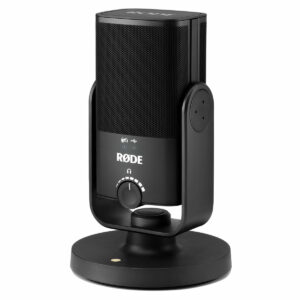 Key features
Key features
- 360-degree swivel mount
- Easy plug-and-play setup
- Built-in pop filter
Pros
- Crisp, clear audio reproduction
- Ideal for home studios and mobile recording
- Detachable magnetic stand for stability
Cons
- Limited versatility for advanced users
The Rode NT-USB Mini is a small-format USB condenser microphone for podcasting, music recording, gaming, streaming, and content creation. Taking the warm, clear sound of Rode’s famed NT-series microphones, the NT-USB Mini sounds clear and articulate.
The built-in magnetic desktop stand can fully swivel up to 360 degrees, making it easy to achieve the ideal position. Plus, with a built-in studio-grade headphone amplifier, you can monitor your sound directly from the mic with no latency.
The NT-USB Mini has a cardioid polar pattern for rejecting background noise and a built-in pop filter for reducing plosives and sibilance, making clear recordings easy to achieve. Plus, a little after release, Rode released a few key firmware updates that really expanded the capabilities of this mic.
Through their Rode Connect app, you can connect up to four NT-USB Mini units to a single computer and have advanced video call and streaming integration. This makes it great for gamers and streamers, whether you just have the one for yourself or all four for guests.
The new app also provides DSP effects – compression and a noise gate for utility, the APHEX Aural Exciter to add extra sheen and polish to your voice, and Big Bottom for, you guessed it, accentuating the low-frequencies. There’s even an app-based Sound Pad that lets you load and trigger up to 64 sounds.
Coming in at a great price, the NT-USB Mini is not just a no-brainer for streamers, podcasters, content creators, and gamers, but is also an attractive choice for musicians thanks to its great sound.
2. Sennheiser Profile – The best plug-and-play microphone
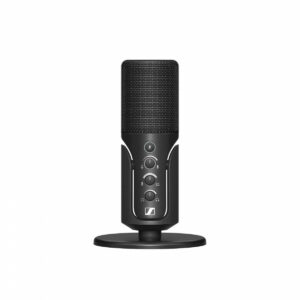 Key features
Key features
- Tailored voice capture technology
- Cardioid condenser
- Integrated shock mount
Pros
- Exceptional clarity for speech and singing
- Plug-and-play with Windows and Mac
- Sleek, professional design
Cons
- Lacks DSP effects, software mixing and other advanced features
The Sennheiser Profile is about as stripped back and to the point as a USB microphone can get, but this is definitely to its benefit. I was given the opportunity to review the Profile about a year ago, and as a self-professed USB mic sceptic at the time, it really won me over.
Whilst all of the advanced features of USB mics like DSP effects processing, software mixers, and samples are fantastic all-in-one solutions for content creators and streamers who want them, sometimes you just want a mic that functions exactly like a traditional XLR design – you plug it in, it works, and it sounds good. This is the experience that the Profile offers.
Taking its German-made KE 10 mic capsule from Sennheiser’s shotgun designs used for film and TV, the Profile has been tuned for a more vocal-focused sound, giving a pleasingly neutral midrange with a slight low-end emphasis and a smooth presence boost that reminds me of many of the typical go-to vocal condensers. It’s a subtle but clear sound that’s hard to argue with.
Rounding out the Profile are its mute button and monitoring features. The input gain has an LED ring that lights up green to indicate good signal levels, but turns red when it starts clipping, so you know how to achieve the right levels.
Then you have two monitoring level controls. One balances the volume of the mic with your computer sound, so you can hear yourself back without latency, and balance it with a backing track you’re recording to. This is a rare feature on USB microphones and a very welcome addition, especially for musicians. The second is a headphone volume control that lets you set a comfortable output for your monitor mix.
For the price, the Profile punches well above its weight, and while some of the missing bonus features might put off some creators who really want those effects and extra controls, anyone looking for simplicity and a full sound will feel right at home with this one.
3. sE Electronics NEOM – The best sound quality
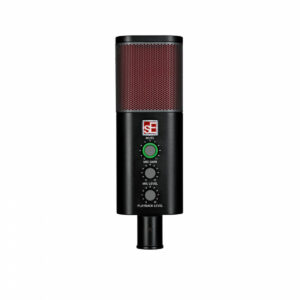 Key features
Key features
- 24-bit/192kHz recording quality
- Cardioid polar pattern
- Built-in headphone output
Pros
- High-resolution audio capture
- Ideal for podcasters and streamers
- Easy to use with simple controls
Cons
- May require an additional pop filter for the best results
sE Electronics are a pretty underrated microphone company that make some excellent mics for home recording musicians and engineers. The NEOM is their first USB offering, and it deserves its place in the conversation among some of the best USB microphones around right now.
This is a condenser with a small 16 mm capsule and a detailed and full sound with plenty of low-end that’s great on vocals and guitars.
The NEOM has a more traditional form factor than many other USB microphones, as well as a taller desktop stand than many competitors, which places it closer to your mouth when used on a desk, giving better clarity. Its classic studio mic look is also great for stand-mounting and absolutely ideal on boom arms. It also has a pretty sizeable gain range, with a dial that goes all the way to 11 – quite literally!
The full and detailed sound of the NEOM feels reminiscent of sE’s other condensers, like the X1 A or the SE2200, but with USB-C connectivity. For anyone who’s used these microphones, that’s no light compliment. The NEOM has a fantastic sound for vocals particularly in professional recordings thanks to its 24-bit conversion and adjustable sample rate that gives everything from 44.1 kHz to 192 kHz for sweeping fidelity.
Separate level controls for microphone and playback level on the headphone output give you the same monitoring flexibility as the Profile with a little more control than just balance.
4. G4M Dynamic Broadcast Microphone – The best podcasting microphone under £200
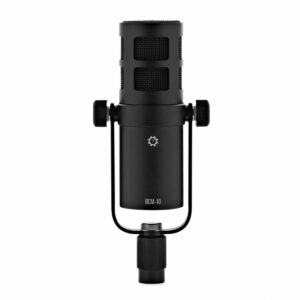 Key features
Key features
- Dynamic microphone
- Cardioid pickup pattern
- Durable metal construction
Pros
- Robust design suitable for rough handling
- Warm, rich sound quality
- Direct monitoring via headphone jack
Cons
- Not as detailed as condenser microphones
The G4M Dynamic Broadcast Microphone is the first dynamic USB microphone on this list. And by the first look, you can probably tell what its strength is: podcasting. Obviously suited to the thick, warm vocal sounds you’d expect from its design, the G4M broadcast microphone has a wide tailored frequency response and dual outputs: XLR and USB.
While its authoritative sound is crisp and great for podcasts, it’s also great for streaming and music, and the dual outputs let you switch from a plug-and-record USB connection to a more professional XLR connection to integrate with other studio equipment.
Encased in durable metal housing with a high-grade swivelling shock mount that reduces handling noise and lets you achieve comfortable positioning, the G4M Broadcast Microphone feels and sounds great while offering long-lasting reliability.
5. Austrian Audio MiCreator Studio – The most expandable USB mic
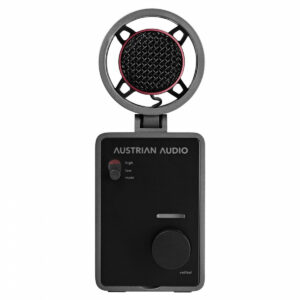 Key features
Key features
- High-precision condenser capsule
- Interchangeable faceplate
- Integrated headphone amplifier
Pros
- Crystal-clear audio reproduction
- Warm, rich sound quality
- Direct monitoring via headphone jack
Cons
- Bulkier size due to integrated audio interface
Austrian Audio are a relatively new brand that make some cutting-edge microphones and headphones. Based in Austria and comprised of several former AKG employees, the brand’s unique design approaches have resulted in some great-sounding futuristic microphones that don’t just stick to established conventions.
The MiCreator Studio is the centrepiece of their modular USB-based MiCreator range designed for recording and content creation. It might look a little strange at first, with its bulky lower half and retro basket-like capsule that swivels, but the MiCreator Studio is actually a combination of a condenser microphone and audio interface in one.
Perfect for recording videos, podcasts, or music on the go, as well as a good solution for video conferences, the MiCreator is a versatile and expandable system that sounds clean, crisp, and detailed.
The MiCreator Studio has a separate input that allows you to connect either a second satellite microphone or an external lavalier microphone. Alternatively, you can connect a second pair of headphones for monitoring and use it as another output instead. Compact, versatile, portable, and expandable, this USB microphone is a great all-rounder.
6. Samson Q2U – The best handheld USB microphone
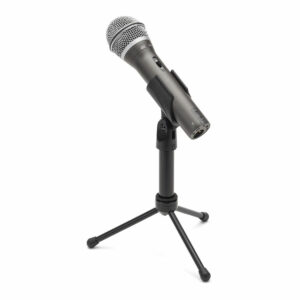 Key features
Key features
- Dynamic mic with XLR and USB outputs
- Includes desktop stand and windscreen
- Onboard headphone jack for zero-latency monitoring
Pros
- Versatile connectivity options
- Comprehensive package for starters
- Clear sound for podcasts and music
Cons
- May lack finesse for professional music production
The Samson Q2U is another dual-output microphone with USB and XLR connectivity. This makes it extremely versatile for different use contexts and styles. The main reason it’s included here is that it fits the extremely rare niche of a handheld USB microphone. Lately, holding a microphone on video seems to have become a common aesthetic of content creation, and the Q2U offers that with a USB connection.
The other main benefit of the Q2U is that it’s a dynamic microphone. That means that it can handle high sound pressures and can be great for recording the intense dynamics of rap, rock, and metal vocals. With its dynamic handheld construction, XLR connectivity, and robust build, it’s also the first and probably only microphone on this list that could double up for live performances!
The Q2U offers a headphone output for latency-free monitoring and comes with a desktop stand, stand extension, microphone clip, and both XLR and USB cables for a complete recording and performance package.
7. Audio-Technica AT2020USBX – The best for studios
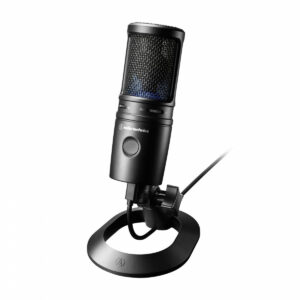 Key features
Key features
- Condenser with high-quality A/D converter
- Mix control blends microphone and pre-recorded audio
- Smooth, extended frequency response
Pros
- Pristine sound quality
- Flexible monitoring options
- Durable design for longevity
Cons
- Sensitive to background and ambient noise
The Audio-Technica AT2020USBX is an extremely faithful USB version of their modern classic AT2020 condenser microphone. Like the XLR microphone it’s based on, it has a dense, warm sound that brings voices to life.
While the original is beloved by musicians, this USB version may be better for podcasters, streamers, and gamers who don’t have an audio interface to work with. Make no mistake though, it’s just as great for musicians as the original XLR model, as this mic retains the exact sound of the AT2020.
Given the AT2020’s status as an affordable studio workhorse for not just vocals, but also acoustic instruments, the AT2020USBX is all of this and more with the addition of a mute button, headphone amp with microphone and computer audio mix, and a tabletop stand. It’s a tempting proposition for USB recordings of all kinds.
8. Rode NT-USB+ – The best expanded model
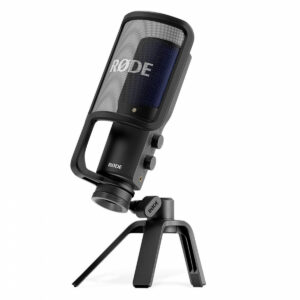 Key Features
Key Features
- Studio-grade condenser capsule
- Zero-latency headphone monitoring
- Direct mix control between mic input and source output
Pros
- Professional recording quality
- Ideal for vocals and instruments
- Includes pop shield and tripod stand
Cons
- No physical gain control on microphone body
The Rode NT-USB+ is the expanded form of the NT-USB range. Sharing some features in common with the Mini, the NT-USB+ features the same Rode Connect app connectivity and effects to deliver a polished, professional sound easily.,
Rode have also added their Revolution preamp from their Rodecaster series mixers into the microphone, giving it a gain boost with a clean and mostly neutral sound that adds just a touch of extra fullness to its sound. The NT-USB+ is a great refinement and expansion of the series that’s great for content creators, podcasters, and vocalists while having the extra fidelity to really shine on instruments too.
9. SubZero SZC-500-USB – The best USB microphone for beginners
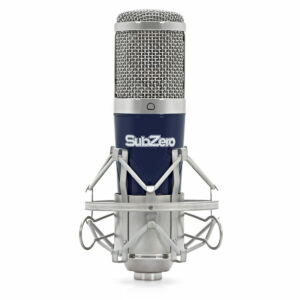 Key features
Key features
- Cardioid pickup pattern
- Plug-and-play with USB connectivity
- Desktop stand and USB cable included
Pros
- Ideal for podcasts and home recordings
- Easy setup, no drivers needed
- Clear sound for its price range
Cons
- Lacks more advanced features
The SubZero SZC-500-USB is a large diaphragm condenser microphone designed for vocals and spoken word. The SZC-500-USB is another no-frills mic, which shouldn’t be a surprise at its price, no fancy software and effects or driver installation are required – just plug in and record without hassle.
This microphone delivers a full, warm sound with a broad frequency response. Built to last with a hard-wearing metal chassis it also includes a shockmount for extra protection and to avoid handling noise.
The SZC-500-USB is a great pick for newcomers to recording, so content creators, podcasters, and musicians looking to make a start with a wallet-friendly microphone that has instant and simple recording can find exactly what they need here.
10. SSL Connex – The best all-rounder
 Key features
Key features
- Optimised for speech clarity
- Simple USB plug-and-play operation
- Compact, sleek design
Pros
- Enhances voice for conferencing and streaming
- Versatile four-voicing design for use with speech or instruments
- Portable for on-the-go use
Cons
- Primarily focused on speech, less versatile
The SSL Connex is a unique quad-array USB microphone system that proves itself extremely capable in all sorts of contexts. Having four individual capsules at each of the four sides of this pyramid-esque design, the Connex looks and is well-suited to conferencing and video calls with a group of people in a single room. However, it’s also great for individual voices and music recording too!
Complete with SSL’s famed EQ and dynamics processing, the Connex has four presets to get the ideal sound for any situation.
These four presets are Solo, a directional mode that uses a single capsule for conference calls, streaming, or podcasting; Group, for roundtable podcasts, group discussions, and video or voice calls; Vocal, for vocal recording, narration and rapping; and Music, for recording loud acoustic instruments.
While the Connex looks like something for office meeting rooms, it’s capable of so much more than that. It also has an automatic smart mixer feature that makes every voice audible in group calls.
The SSL Connex also has a powerful headphone output, a momentary muting “cough switch”, and a “push to talk” button so you’re heard only when you want to be. The SSL Connex is an inviting all-in-one solution for USB-based recording and voice capture.
11. IK Multimedia iRig Studio – The best for music recording
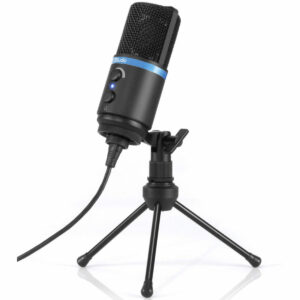 Key features
Key features
- Large-diaphragm condenser capsule
- 24-bit converter with 44.1/48 kHz sampling rate
- Integrated headphone output for real-time monitoring
Pros
- Professional studio sound quality
- Versatile for vocals and instruments
- Compact and portable design
Cons
- Some users might want a larger mic than this compact model
The IK Multimedia iRig Studio is an extremely small-format condenser microphone designed for music recording first and foremost. While many of the mics on this list are capable of musical recordings, there are very few USB mics made with this purpose being the main driving factor of their design.
This small and portable large-diaphragm condenser has a high-quality 24-bit converter with 44.1 kHz and 48 kHz sample rates and a built-in preamp for pristine audio fidelity.
The iRig Studio is still just as great for content creators, podcasters and streamers as any other, capable of connecting to smartphones, tablets, and Mac or Windows computers.
This mic is bundled with a range of software effects, including IK’s VocaLive effects suite, EZ Voice, which lets you perform alongside any song on your phone’s music library, as well as a dedicated iRig recording app and the Mic Room microphone modelling app for iOS to get the exact sound character you want.
Accompanied by a tripod stand and three different cables, the iRig Studio is ready to connect to any device you want to record with.
12. Shure MOTIV MV5 – The best for desktop use
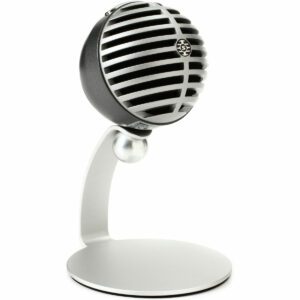 Key features
Key features
- Custom-tuned microphone capsule
- DSP for enhanced sound quality
- Detachable desktop stand
Pros
- Excellent clarity for vocals and instruments
- Easy plug-and-play setup
- Versatile for various recording needs
Cons
- Limited adjustment options on mic itself
The Shure MOTIV MV5 is a pretty striking microphone right out of the box. With a retro-style capsule that throws back to the very early designs of the ‘30s and ‘40s, the guts of the microphone are far more modern than its look would have you believe. Compact, lightweight, and easily desktop-mounted, the MV5 is an excellent space-saver.
The MV5’s detailed sound is further accentuated by three voicing presets that let you get a flat, neutral sound, a podcast-ready vocal sound, and an instrument setting for guitars and other acoustic instruments that have custom EQ curves and compression to suit your needs.
It’s easy to record with the MV5 directly to your computer or your smartphone or tablet thanks to the ShurePlus app, which gives you hands-on control of your effects. The MV5 is another great multi-purpose USB microphone for recording of all kinds.
13. Audio-Technica AT2040USB – The best noise isolation
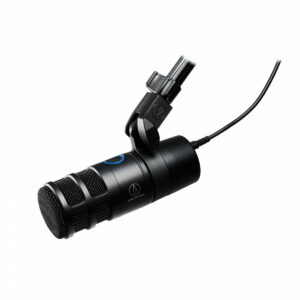 Key Features
Key Features
- Hypercardioid polar pattern
- Built-in headphone jack with volume control
- High-quality A/D converter
Pros
- Minimises background noise effectively
- Real-time monitoring without latency
- Crisp, broadcast-quality sound
Cons
- Not as versatile for musical recordings
The Audio-Technica AT2040USB is a dynamic USB microphone that benefits from the heritage of Audio-Technica’s long history in microphone design. A sleek and tough metal build that looks great on camera and sounds just as good means that you have a USB mic ready for podcasting and streaming from the moment you plug it in.
The AT2040USB is the only microphone on this list with a hypercardioid polar pattern, setting it apart from many of the others and offering great ambient noise rejection in small or untreated spaces. Its built-in pop filter, headphone monitoring output with a mix control, and a mute button make sure you get smooth, clear audio and control over what’s heard and when.
There’s even a switchable low-cut filter for removing low-frequency rumble.
14. Mackie Chromium – The most versatile USB mic
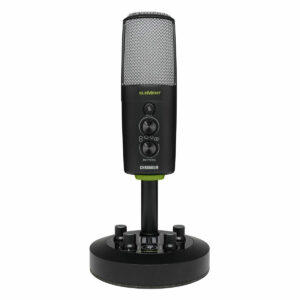 Key features
Key features
- Studio-quality condenser capsule
- Built-in mixer with instrument input
- Onboard headphone output for monitoring
Pros
- Ideal for podcasters, streamers, and musicians
- Versatile recording options
- Clear, detailed audio reproduction
Cons
- More complex setup for beginners
The Mackie Chromium is a pretty unique offering even when removed from the context of £200 or less. As a condenser microphone, you might expect a standard cardioid polar pattern, but this is actually a multi-pattern USB microphone, letting you switch between cardioid, omnidirectional, figure-eight, and stereo recording!
With a built-in mixer that delivers one of Mackie’s famed Onyx microphone preamps seen on their analog mixer range, the Chromium sounds full and clean with an extremely low noise floor.
The mixer also has an instrument input as well as a minijack aux input for your smartphone or tablet, making it a pretty enticing all-in-one solution for content creators and musicians. On-board gain controls and an adjustable headphone output level as well as a monitoring blend between USB audio source and mic signal make it easy to get personalised playback.
How to choose the best budget USB mic
There are a few ways to determine the best USB microphone for your budget. The first is to know your limit, how much are you willing to spend at the absolute most? While you can find some gems at any price, you tend to get what you pay for, so knowing the general feature set of your price bracket will go a long way.
The next thing is to work out what you want to use it for. This is important as it’ll help you work out what features to look for in every other area.
Do you want to use it for gaming with your friends? Podcasting? Streaming? Video conferences? In-person interviews? Music? You’ll probably have a combination of several of these in mind, but these priorities will help you know what to look for. This can inform every other step of your buying process.
The microphone type is very important as this will determine how it’s used, and to some extent, the sound of the microphone. For example, dynamics sacrifice detail for a few benefits: managing louder noises before distortion, cancelling out more ambient noise in untreated spaces, and being more resistant to plosives due to often having a built-in pop filter.
Dynamic mics are great for podcasting, streaming, and gaming with friends.
However, condensers are far more detailed – ideal if you need a polished sound for video conferences, long-form video content, or recording instruments or vocals. Condensers are generally more versatile since they’re also just as usable for gaming, streaming, and podcasting, but they can be more sensitive and prone to distortion from loud sounds too – so be aware to set the gain at a good level.
They’re also susceptible to plosives, so it may be worth considering a pop filter if one isn’t included with the mic. The choice is really down to preference and how you want to use it.
Finally, we need to think about additional features. Do you want to record to your phone? Is there an app or included cable that’ll let you do so? Do you need stereo recording? Do you want DSP effects to create a fully polished and processed sound, or do you have effects and recording software that you can do that with already? Is the polar pattern right for you?
I can’t answer any of these questions for you, but these are some common features that the mics on this list have. They’re good to be aware of if you need them to meet your requirements or don’t want to pay for any unnecessary features.
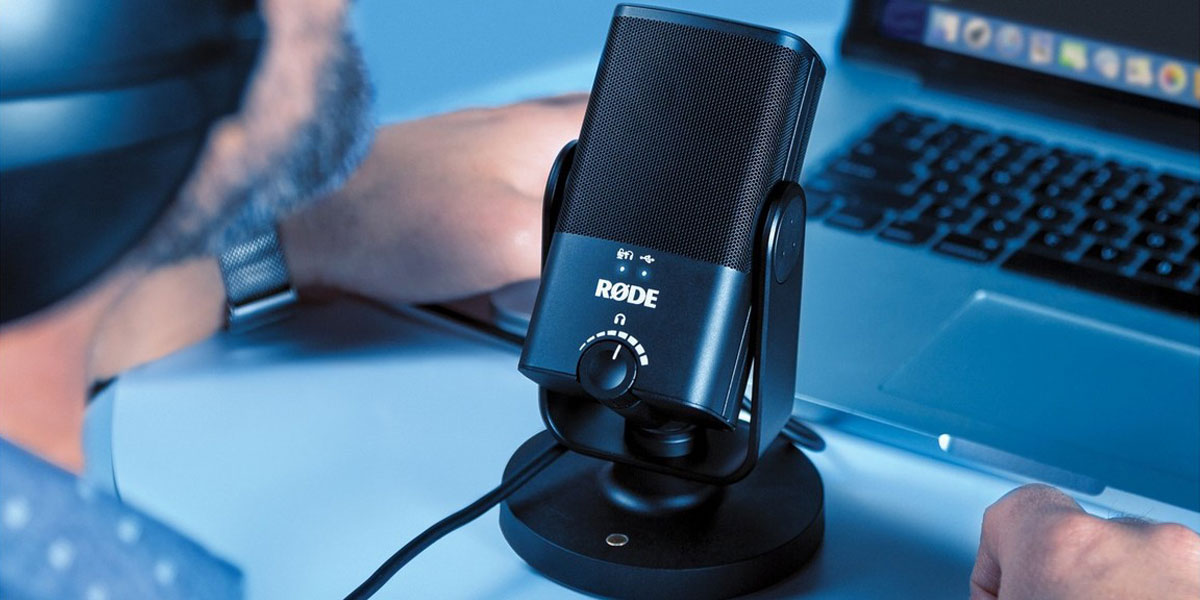
Accessories to complete your setup
So, what else might you need with your microphone? Honestly, it depends on what you pick and how you want to set it up. For example, most mics come with a desktop stand. That said, it may still be worth investing in a boom arm or other stand, as you can position them closer to the source you want to record, getting a fuller and more detailed recording.
Pop filters aren’t always included, but they often are. If your mic doesn’t include one though, it’s worth getting, especially for a condenser which is far more susceptible to clipping from plosives.
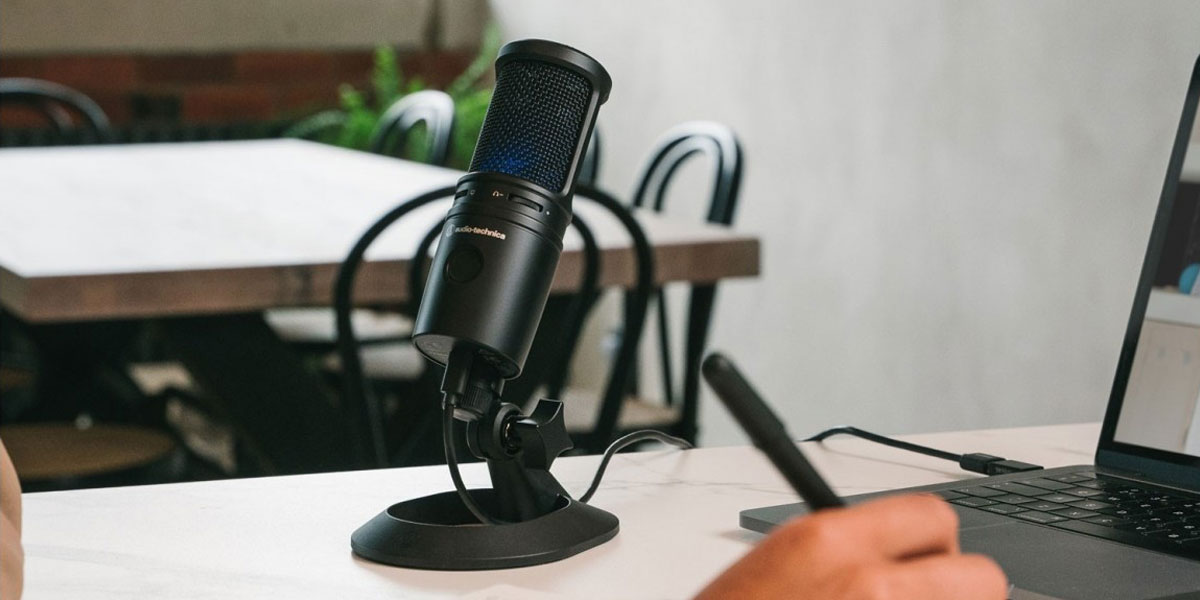
FAQs
Is it worth getting a USB microphone?
USB microphones offer convenience and quality, making them a solid choice for beginners and pros alike. Their plug-and-play design requires no extra gear and provides studio-quality sound for various applications.
Are cheap microphones worth it?
Affordable microphones can be a great investment, especially for those just starting out. They allow you to explore recording without a hefty price tag, though higher-end mics might deliver superior sound quality.
Is an XLR mic better than a USB mic?
XLR microphones can offer better sound quality and versatility, suited to professional studios. However, USB mics provide simplicity and ease of use, making them ideal for home studios and portable recording setups.
Final thoughts
USB microphones can cover a wide range of different use cases and vary heavily in terms of features and sound, but there should be something for every need on this list of the best budget USB microphones.
Hopefully, you have a few options to weigh up and know exactly what accessories you need to get great, fast recordings for podcasts, streams, music, and any other kind of content you want to make.

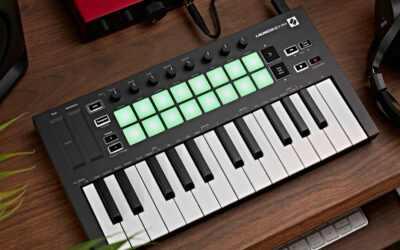
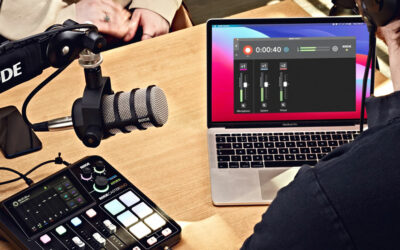


0 Comments